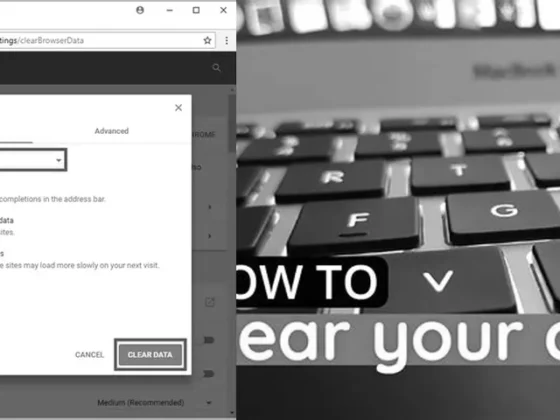How to Check the Amount of RAM on Your Chromebook: A Comprehensive Guide – Are you curious about how much RAM your Chromebook has? Well, you’re in the right place! Understanding the RAM on your Chromebook is crucial for optimizing its performance and ensuring smooth multitasking. In this blog post, we’ll delve into the world of Chromebook RAM, discussing its specifications, how to manage it effectively, and ultimately answer the burning question, “How do I see how much RAM I have on my Chromebook?” So, grab your Chromebook and let’s dive into the fascinating world of RAM!
Understanding RAM on Your Chromebook
Random Access Memory (RAM) is a crucial component of any computing device. It’s the workspace of your computer, where your programs run and your content is created. For Chromebook users, knowing how much RAM you have can be important for managing multiple applications and ensuring smooth performance. Below, we’ll explore different methods to check your RAM and discuss why it’s beneficial to keep an eye on this vital resource.
Using ChromeOS Diagnostics to Check RAM
Chromebooks come equipped with a built-in tool that allows you to see detailed information about your system, including RAM. Here’s how you can access it:
- Type “Diagnostics” in the ChromeOS search bar.
- Select “Diagnostics” from the results that appear.
- Scroll down to the bottom of the page to find your RAM information.
The Diagnostics page will display the total amount of RAM your Chromebook has, as well as how much is currently available. This can be particularly useful when you’re trying to determine if you have enough free memory to run additional applications or if you need to close some to free up space.
Using Cog – System Info Viewer App
If you’re looking for a more user-friendly option with graphical representations, the “Cog – System Info Viewer” app is a great alternative. Here’s how to use it:
- Download the “Cog – System Info Viewer” app from the Chrome Web Store.
- Open the app drawer and launch the app.
- Navigate to the “Memory” section to see your RAM details listed in gigabytes.
The Cog app not only displays the amount of RAM but also provides insights into its usage. This can help you monitor your Chromebook’s performance and take action if necessary.
Chromebook RAM Specifications
Most Chromebooks are designed to be lightweight and efficient, and as such, they typically come with either 2GB or 4GB of RAM. While 2GB may be suitable for very light use, it is generally recommended to opt for a Chromebook with at least 4GB of RAM, especially if you plan to multitask or run more demanding applications.
Why Is 4GB of RAM Recommended?
4GB of RAM has become the standard for most entry-level Chromebooks, providing a balance between cost and capability. It allows users to comfortably browse the internet, stream media, and work on documents without significant slowdowns. Here are a few reasons why 4GB is the recommended minimum:
- Improved Multitasking: With more RAM, you can have more tabs and apps open simultaneously without experiencing performance hiccups.
- Better Performance: More RAM means your Chromebook can handle more complex tasks and process larger files with ease.
- Future-proofing: As software and web applications continue to evolve, they often require more memory. Having 4GB of RAM helps ensure your Chromebook remains functional for a longer time.
Finding Your Chromebook’s Specs
Aside from RAM, you might be curious about other specifications of your Chromebook. To find a comprehensive list of your system’s specs:
- Type “chrome://system” into the address bar of the Google Chrome browser.
- Press Enter, and a page with your Chromebook’s system information will be displayed.
This page includes not just memory information but also details on the processor, storage, and software versions. It’s a useful resource for troubleshooting or when seeking support.
Managing RAM on Your Chromebook
Knowing how much RAM you have is just the first step. Managing it effectively is key to maintaining your Chromebook’s performance. Here are some actionable tips:
Tip #1: Monitor Open Tabs and Extensions
Every open tab and active extension consumes RAM. Try to keep the number of open tabs to a minimum and regularly review and disable extensions you’re not using.
Tip #2: Use Lightweight Applications
Opt for web-based or lightweight applications that are designed to use less memory. This can make a significant difference in how much RAM is available for other tasks.
Tip #3: Regularly Restart Your Chromebook
Restarting your Chromebook can clear temporary files and free up RAM. It’s a simple yet effective way to refresh your system’s memory usage.
Tip #4: Consider Upgrades or a New Device
If you consistently find yourself running out of RAM, it may be time to consider a Chromebook with more memory or explore options for upgrading your current device, if possible.
Conclusion
Understanding and managing your Chromebook’s RAM is essential for a smooth and efficient user experience. By using the built-in Diagnostics tool or the Cog – System Info Viewer app, you can easily check how much RAM you have and make informed decisions about your usage and potential upgrades. Remember that while 2GB may suffice for the most basic tasks, 4GB is the recommended minimum for a reason. Keep your Chromebook’s performance optimal by being mindful of your RAM usage and taking steps to manage it effectively.
FAQ & Related Questions about How Do I See How Much RAM I Have Chromebook?
Q: How can I check how much RAM I have on my Chromebook?
A: To check the amount of RAM on your Chromebook, you can either use the “Diagnostics” feature in ChromeOS or download the “Cog – System Info Viewer” app from the Chrome Web Store.
Q: What is the quickest way to see how much RAM I have on my Chromebook?
A: The quickest way to check your Chromebook’s RAM is by typing “Diagnostics” in the ChromeOS search bar, selecting “Diagnostics” from the results, and finding the RAM information at the bottom of the page.
Q: Can I upgrade the RAM on my HP Chromebook?
A: No, the RAM on HP Chromebooks is integrated (soldered) onto the system board and cannot be upgraded. However, you can expand the storage capacity by using a high-capacity microSD card.
Q: What are the typical RAM options for Chromebooks?
A: Most Chromebooks come with either 2GB or 4GB of RAM. However, the specific RAM capacity may vary depending on the model and manufacturer.
Q: How do I find the system information of my Chromebook?
A: To find the system information of your Chromebook, type “chrome://system” in the address bar of the Google search window. The search window will then display the Chromebook system information.


